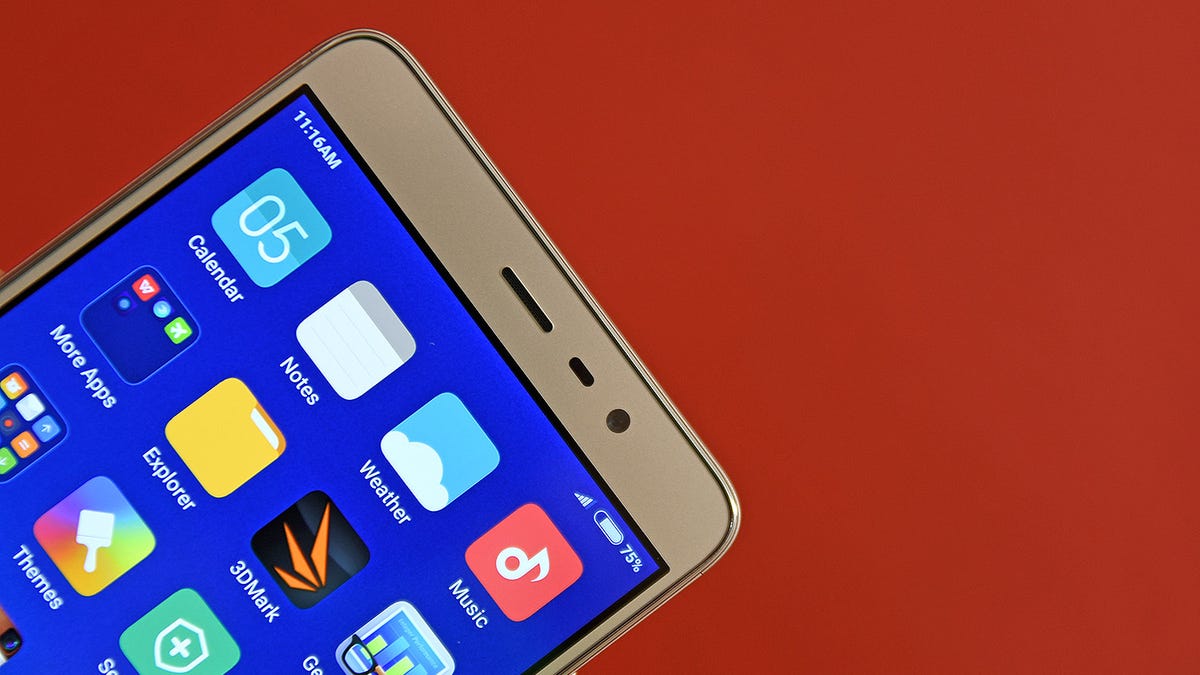Apple, Samsung rival Xiaomi readies itself for US 'battle'
China's up-and-coming phone brand is gathering strength to enter major Western markets, but it'll take some serious planning.

This much is certain: Chinese phone maker Xiaomi is coming to the US. But there's a lot that has to happen before you'll be able to buy a Xiaomi phone meant for the States, and the pieces won't come together in 2016.
Click to read more of Jessica's tech stories from Asia.
"The US is a very different market," said Hugo Barra, Xiaomi's vice president of global, in an interview at the company's headquarters in Beijing as part of my 19-day tech trip around Asia. "I think the natural time will come. It's certainly not this year."
When the company, which has built up a loyal fan base in countries like Brazil and India with its affordable phones, does decide to pull the trigger, it'll take a year or two of "preparation" before Xiaomi launches a US device, he said.
So what does "preparation" look like for Xiaomi? It looks like readying itself for some patent battles, and figuring out how to work with US carriers, no easy task for a company that sells the vast majority of its phones online, directly to consumers.
Xiaomi has to get (patent) battle-ready
Industry-watchers speculate that Xiaomi opens itself up to lawsuits for patent infringement the moment it starts selling phones in the US (in fact, it's already been targeted). The epic Apple versus Samsung trials are only the most recent case of companies going after one another for illegally using or copying the other company's intellectual property.
But Xiaomi says it's ready.
What it's like inside Xiaomi, China's popular upstart phone-maker (pictures)
See all photos"Definitely, we are aware of those challenges in the patent area," said Xiang Wang, Xiaomi's senior VP of mobile. The company filed 3,000 patents in 2015, he said, and are acquiring new patents to fill its portfolio. "We are in a battle," Wang said.
Doing business in the US as a new phone maker is a well-known process, Xiaomi's Barra told me during our interview. You negotiate with patent-owners for essential licenses, stuff you need to make a phone work in the first place, like cellular technology.
Then you've got the so-called patent trolls who buy up the rights to certain products or processes. "You have to be prepared to fight those," Barra said, as well as actual real competitors who might levy a suit.
Xiaomi's VP of global, Hugo Barra, helps launch the company's products both inside and outside of China.
The US isn't an isolated case. "[Xiaomi] needs to protect its business from a patent/IP [intellectual property] perspective no matter the country or region they are entering," said Jon Erensen, the research director at Gartner. "In some countries the environment is such that it is easier to protect patents and enforce IP."
"We're very well prepared," Barra said about patents. "There's no mystery involved in this territory. It's very predictable."
Xiaomi has to get buddy-buddy with carriers
In the US, Xiaomi faces a problem of obscurity, one that cozying up to carriers can help dissolve. The overwhelming majority of Americans buy phones from their carriers. Xiaomi sells almost all its phones from its website.
More and more phone makers are trying to sell devices to US buyers through their own websites, but most people shop through carriers. This math won't work in Xiaomi's favor.
It needs relationships with US carriers, which it doesn't have. But here's what it does have:
- Experience working with carriers in its Singapore market
- Attention of the tech press
- Existing partnerships with Google and Facebook that could certainly help its case
It also doesn't hurt that it has Hugo Barra, who was vice president of Android at Google's Silicon Valley mothership before signing on at Xiaomi in 2013.
Xiaomi will need a strategy for dealing with (or bypassing) carriers when it comes to the US.
Still, when the time comes for Xiaomi to make its US landfall, don't expect it to go all-in with carriers. The company's online-mostly business model is working. In India, the world's second most populous country, Xiaomi is working to carve out a name against Apple, Samsung and homegrown brands like Micromax.
"At the time we entered, India was only about 10 percent e-commerce," Barra said. "Now it's at about 30 percent." What this means for Xiaomi: It now has a 20 percent larger available market to try to win over. (As of late April, IDC reports the phonemaker lost ground.)
Pricey patent wars aside, Xioami's likely plan of getting in on the ground floor of online sales is a good model if US buying habits do indeed move in this direction, and if Xiaomi can also figure out how to gain buyers' trust in its relatively unknown brand.
This article also appears in Spanish. Read Xiaomi se prepara para dar batalla a Apple y Samsung en EE.UU.

